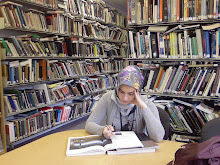As a follow-up to the below post, I thought it useful to expand a bit on Pliny the Elder’s account of the origin of painting. In his Natural History (circa 77-79AD), Pliny attempts to make the compendium of information for his time. In Books XXXIV and XXXV, he discusses metallurgy, sculpture, and painting.
In Chapter 5 of Book XXXV, he writes, “We have no certain knowledge as to the commencement of the art of painting, nor does this enquiry fall under our consideration. The Egyptians assert that it was invented among themselves, six thousand years before it passed into Greece; a vain boast, it is very evident. As to the Greeks, some say that it was invented at Sicyon, others at Corinth; but they all agree that it originated in tracing lines round the human shadow [...omnes umbra hominis lineis circumducta].“
Later, in Chapter 15, he tells the now-famous story of Butades of Corinth. “It was through his daughter that he made the discovery; who, being deeply in love with a young man about to depart on a long journey, traced the profile of his face, as thrown upon the wall by the light of the lamp [umbram ex facie eius ad lucernam in pariete lineis circumscripsit].“
From the mid-to-late 18th century until the early 19th century, The Origin of Painting was a mildly popular sub-genre, depicted by artists under titles such as “The Origin of Painting”, “The Art of Painting”, “The Invention of Drawing”, and “The Corinthian Maid”. Some examples:

Jean Baptiste Regnault, Origin of Painting, 1785

David Allan, Origin of Painting, 1775

Joseph Benoit Suvee, Invention of Art of Drawing, 1793

Karl Friedrich Schinkel, Origin of Painting, 1830
Some recent interpretations of Pliny’s story:

Francine van Hove, Dibutades, 2007

Karen Knorr, The Pencil of Nature, 1994. (The title is a mixed metaphor, as it is the title of Henry Fox Talbot's 1844-46 account of his invention of the photographic process)
Architecture Historian Robin Evans, in his essay “Translations from Drawing to Building”, makes an astute observation regarding the Schinkel version shown above. In comparing it to David Allen’s rendition, he notes that Schinkel, an architect, is the only of his contemporaries to depict the shadow as cast by the sun. Allen and others use the point source of a lamp. Evans uses this discrepancy to explain the two major paradigms of projection: parallel (orthography) and centric projection. The artist uses the converging lines to make enlargements and reductions in the scale of the image, by changing the physical relationships between light, subject, and wall. The architect requires precision in scale for transmission of information. The sun provides this control, so it doesn’t matter where the subject is; the sun’s rays are parallel, guaranteeing a precise same-scale reproduction when the shadow reaches its screen.

No comments:
Post a Comment